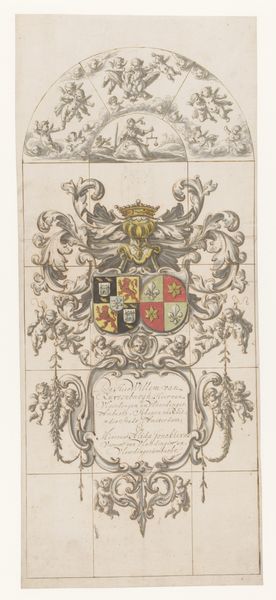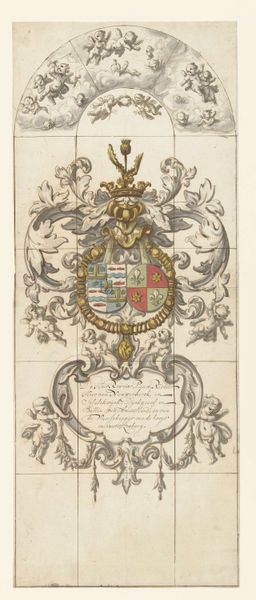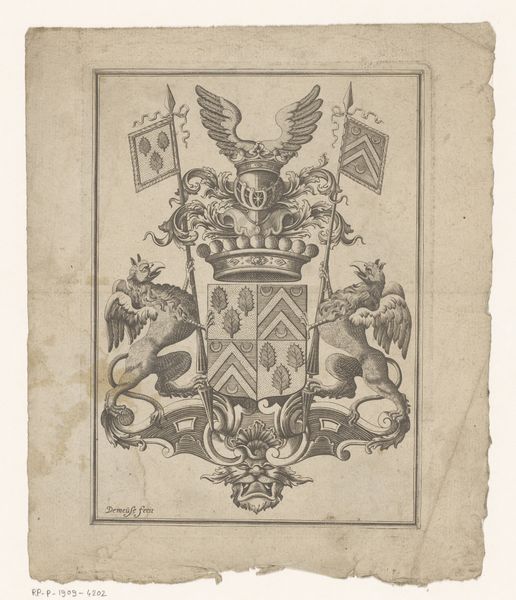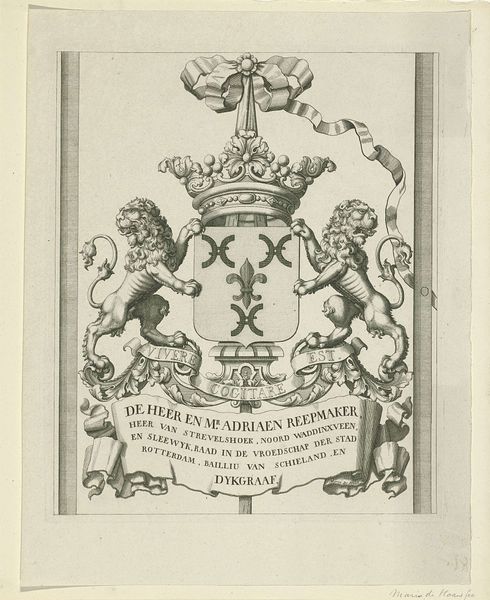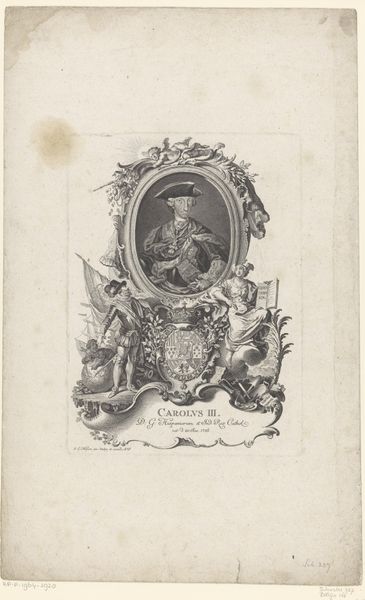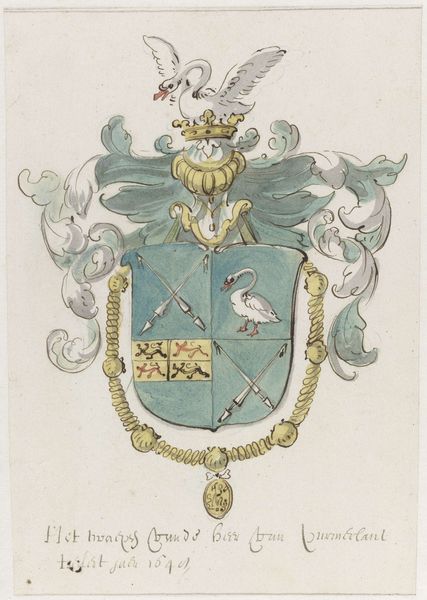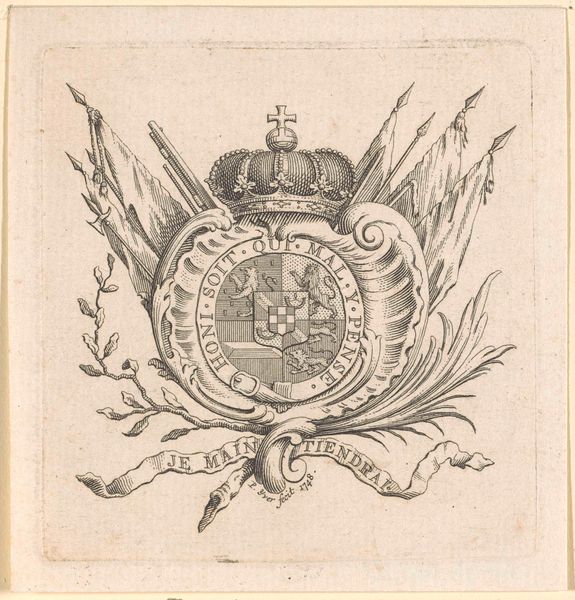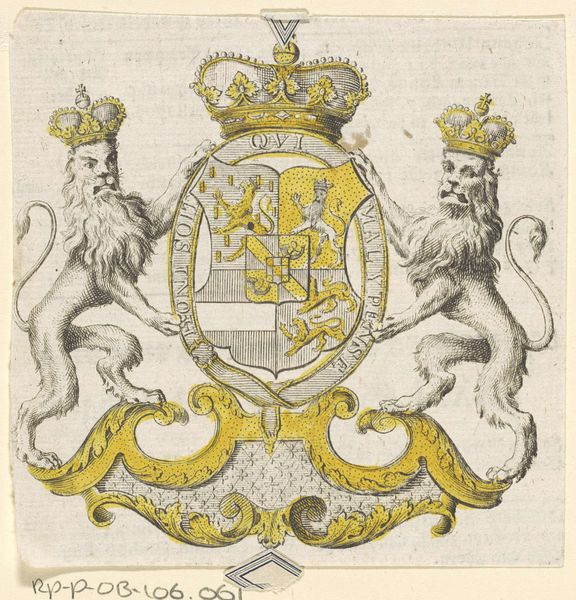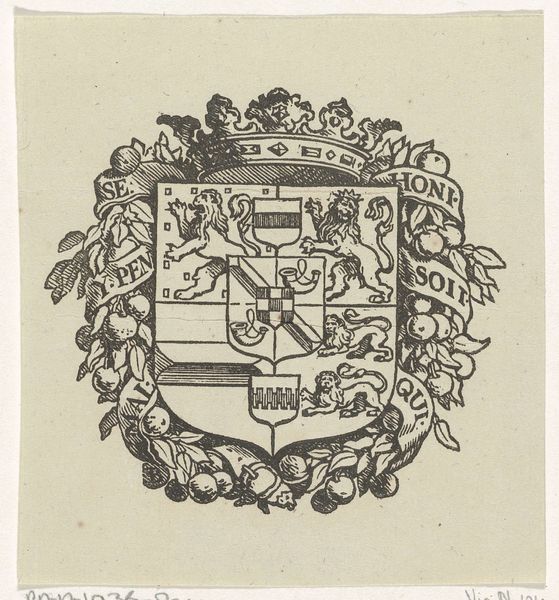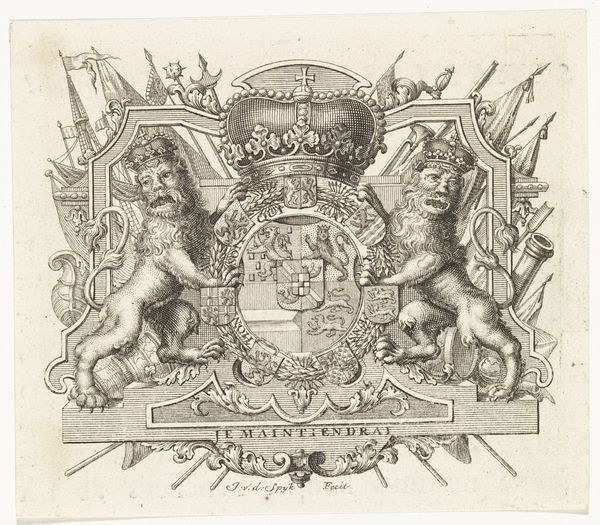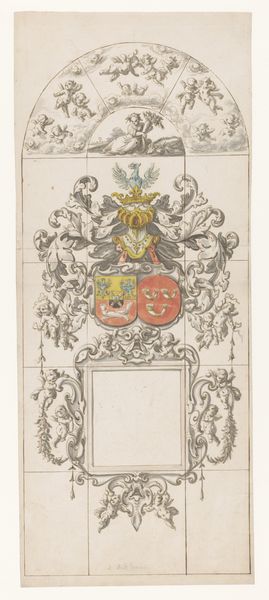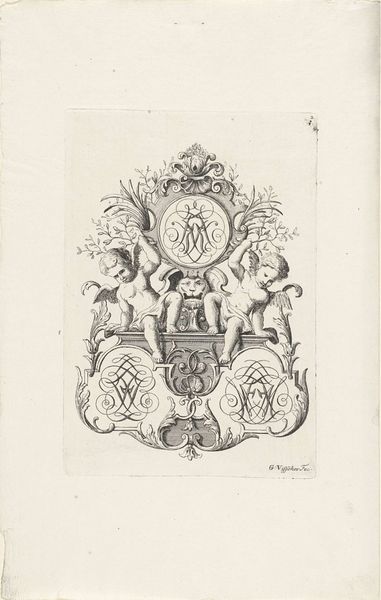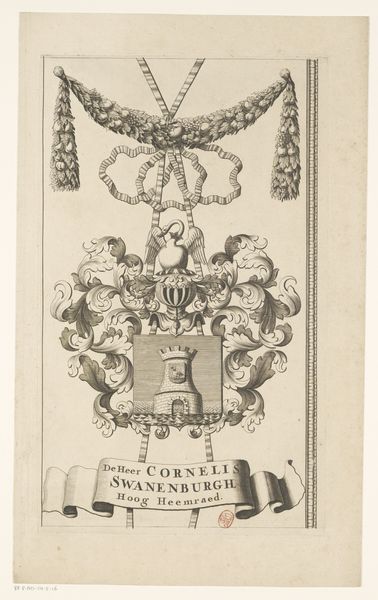
drawing, paper, ink
#
drawing
#
medieval
#
figuration
#
paper
#
ink
#
line
Dimensions: height 258 mm, width 218 mm
Copyright: Rijks Museum: Open Domain
Editor: This drawing, dating from between 1817 and 1899, is called "Wapen van Willem III, koning der Nederlanden," or Coat of Arms of William III, King of the Netherlands. It’s an ink drawing on paper, attributed to an anonymous artist, with impressive detail! It gives off a feeling of imposing power. How do you interpret this work? Curator: This piece speaks volumes about the construction and maintenance of power through visual language. Arms were, and continue to be, potent symbols. How does this image function within a socio-political context? The motto “Je Maintiendrai” literally “I will maintain” implies steadfast resolve, and the lions serve as staunch defenders. This isn't just heraldry; it’s a visual declaration of sovereignty. What can you tell from its display of symbols about its era and what do you think it might mean in later interpretations? Editor: It seems to glorify a medieval idea of monarchy even well into the 19th century, almost idealizing William III. Knowing he wasn't always a popular ruler, maybe this image attempts to reinforce a certain image. Curator: Exactly! Images such as these participated actively in forming the narratives of nationhood, of lineage, of who belongs and who is excluded. Consider, for example, who would have viewed images like this and where, and what purpose was intended? It’s important to consider what ideologies are embedded and which ones challenged, then and now. Editor: I hadn’t considered its purpose beyond being a symbol. It's fascinating to see how even a seemingly straightforward image like a coat of arms can be a site of power and identity construction! Thanks. Curator: Precisely! By examining historical artworks through critical lenses, such as race, gender, and class, we see the complex stories they tell about ourselves and the world around us. I’m glad you understand now.
Comments
No comments
Be the first to comment and join the conversation on the ultimate creative platform.
